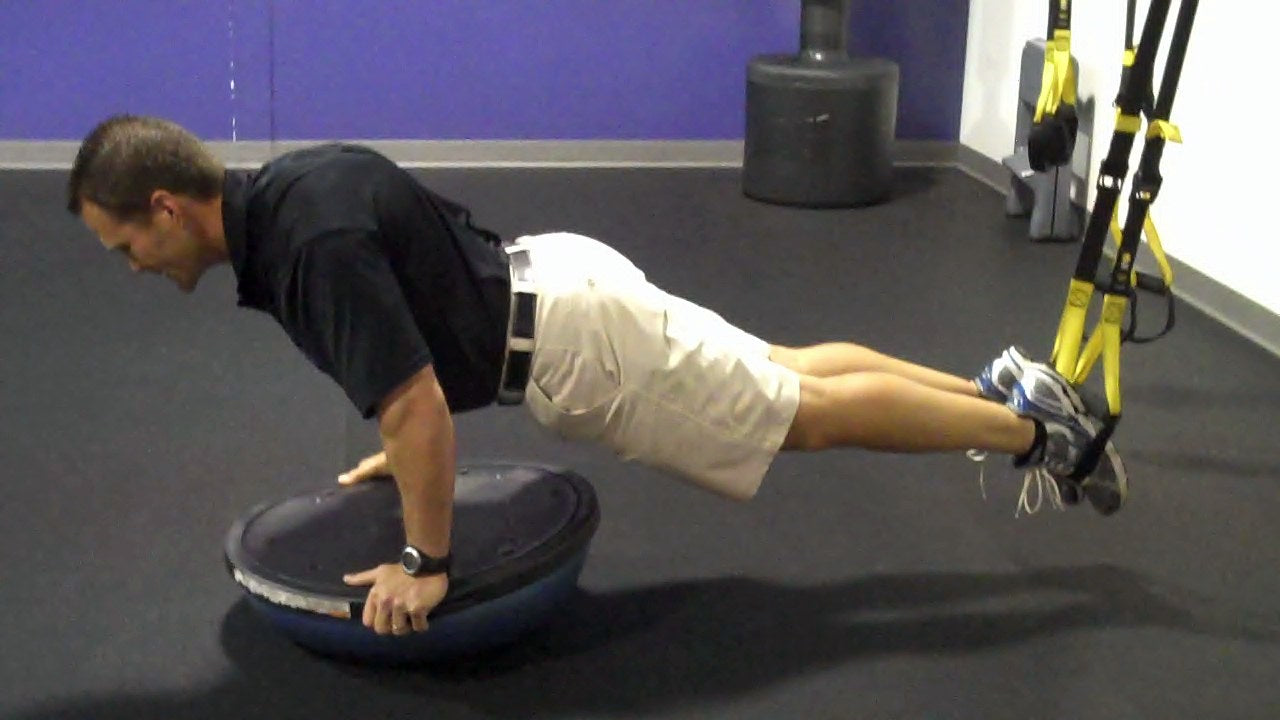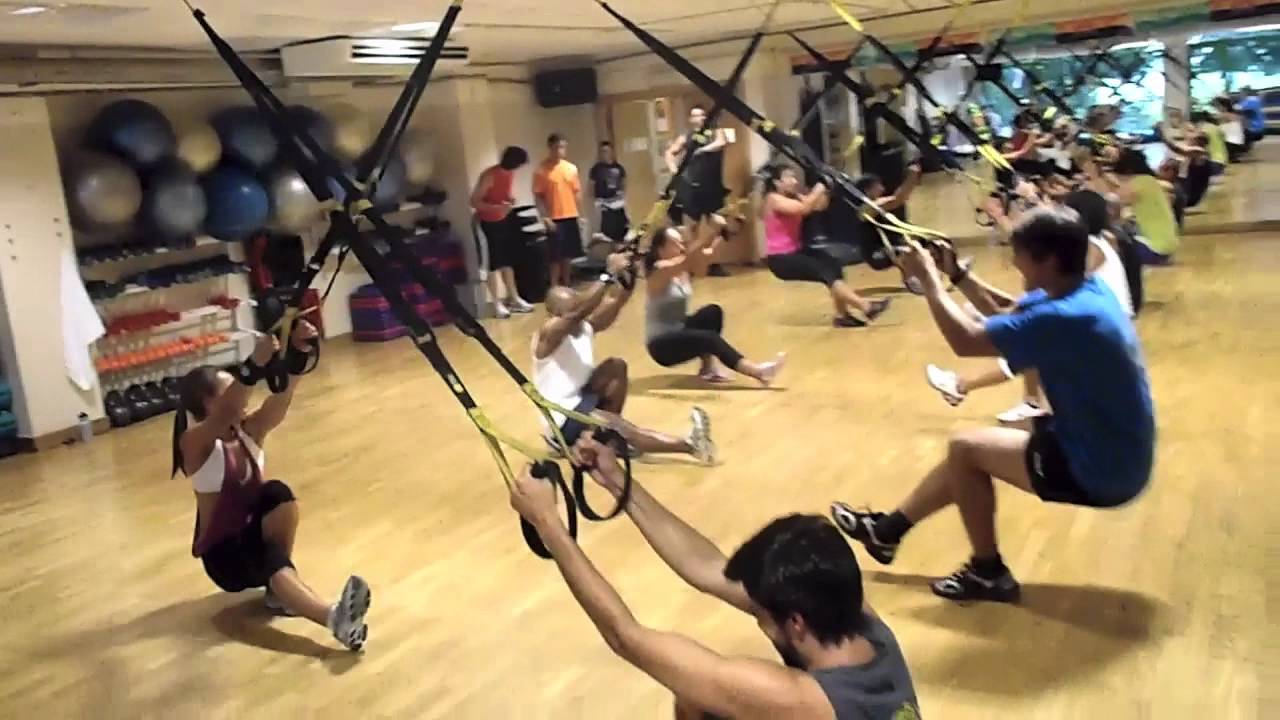
We’ve had dozens of requests for information on using the TRX Suspension Trainer with a BOSU, so we’ve enlisted the help of Brian Schiff, a physical therapist, fitness professional and experienced BOSU-er, to put together some TRX BOSU exercises to add variety to your routine and really challenge your core stability and balance.
There are several ways to incorporate the BOSU with the TRX to add challenge to traditional exercises like the push-up. The key thing to remember is keeping strict form throughout the entire movement. Sacrificing form for more reps or to move on to the next progression is not recommended.
The exercises performed in the video progress from easiest to hardest in terms of stability level, not necessarily perceived exertion as narrow grip push-ups may seem more tiring than offset. The TRX BOSU exercise progression Brian performs in the video is as follows:
- TRX BOSU Push-up ((flat side up)
- TRX BOSU Push-up Plus (flat side up)
- TRX BOSU Narrow Push-up (flat side up)
- TRX BOSU Offset Push-up (dome side up)
- TRX BOSU Push-up (dome side up)
A suggested rep and set scheme is one to three sets of five to 10 reps at first. Gradually increase repetitions, add external loads (e.g. a weight vest) or increase time under tension (bottom position) to raise the intensity of each exercise.
When performing these exercises, keep your hands beneath your shoulders at all times, unless you are seeking to further heighten core work. If so, gradually extend the hands forward of the shoulders, and this will increase the lever arm of the body and dramatically increase abdominal firing to prevent hyperextension of the lumbar spine.
Using the BOSU with the flat side up approach allows for a wider base of support in the upper body. Therefore, you will sense more shoulder work. Conversely, the dome side up position creates a narrow base of support and forces greater recruitment of the chest and triceps. This position can also be much tougher on the wrist joint, so those of you with a history of wrist injuries/pain should use caution.
The temptation to skipping ahead to the hardest exercise or the coolest looking one is normal, but failing to properly progress through these exercises can lead to a shoulder injury. So keep that in mind and be sure to master the exercises sequentially.
Brian Schiff, PT, CSCS, (www.BrianSchiff.com) is a nationally respected physical therapist, author, speaker and fitness professional.


